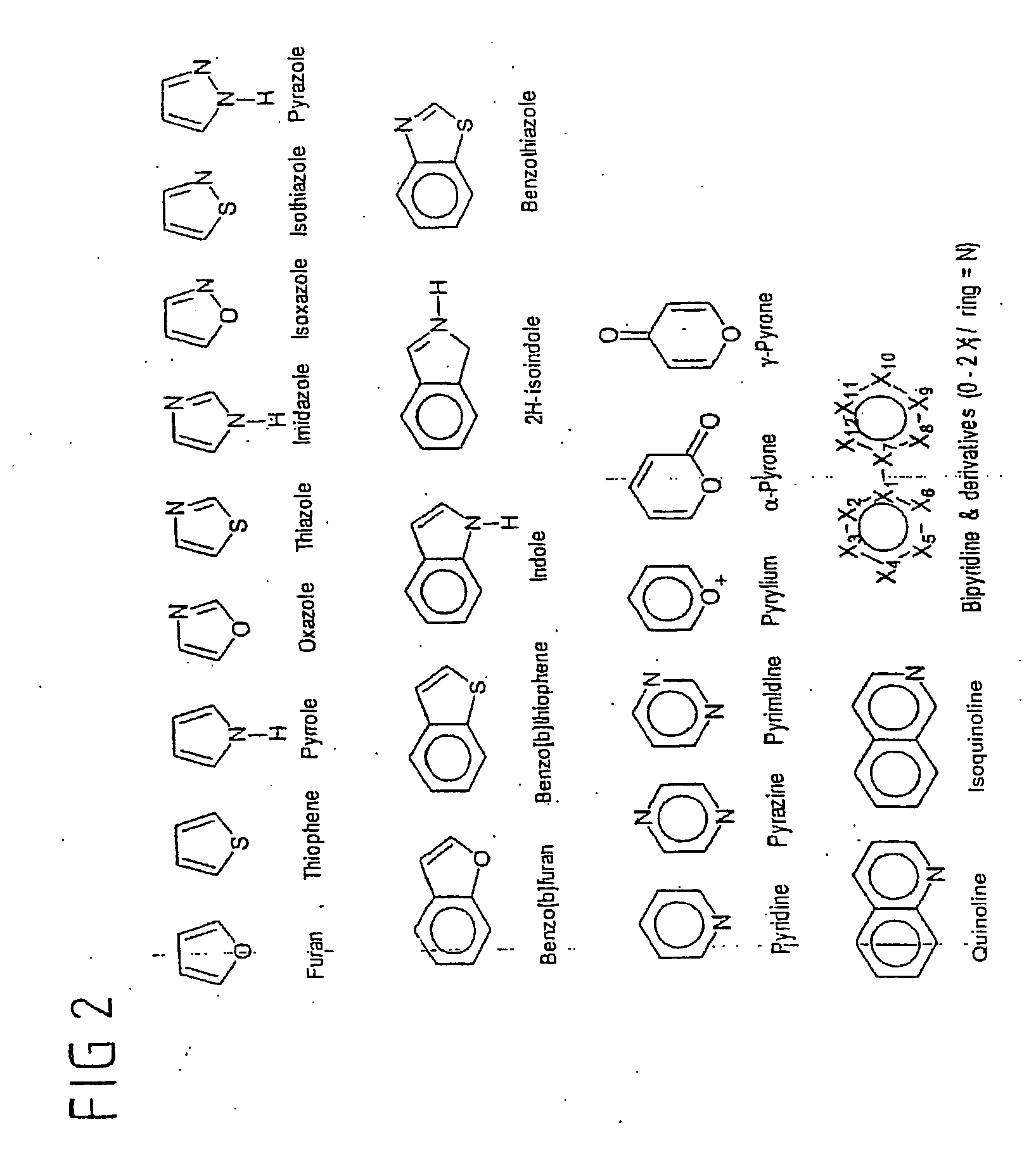Synthesis method for a compound used to form a self-assembled monolayer, compound for forming a self-assembled monolayer, and layer structure for a semiconductor component
a technology of compound and monolayer, applied in the field of semiconductor manufacturing, can solve the problems of high cost of silicon-based chips, inability to use silicon-based identification tags for food marking, and low efficiency of silicon-based chips, and achieve the effect of efficient use for production
- Summary
- Abstract
- Description
- Claims
- Application Information
AI Technical Summary
Benefits of technology
Problems solved by technology
Method used
Image
Examples
example 1.1
Preparation of 18-bromooctadec-1-ene
[0072] Compounds having alkyl chains and different substituents in the α- and ω-position are commercially available only up to a chain length of 12 carbon atoms. For longer-chain compounds, ω-bromoalkenes are frequently used starting materials since a large number of simple reactions makes it possible selectively to convert one of the in the case of the functional groups. This is a preparatory step for the synthesis according to the invention, a halogenated 1-alkene then reacts further.
[0073] Heid prepares bromoheptadec-1-ene from the Grignard compound of 5-bromopent-1-ene and an excess of 1,12-dibromododecane using a lithium-copper-catalyzed coupling reaction in 66% yield and made it possible to dispense with the complicated medium-pressure chromatographic purification required in the earlier methods (S. R. Wassermann, Y.-T. Tao, G. M. Whitesides, Langmuir 1989, 5, 1074). Excess starting material and the byproduct docosa-1,21-diene formed from ...
example 1.2
Preparation of (18-Phenoxyoctadecyl)trichlorosilane
[0105] 18-Bromooctadec-1-ene obtained in example 1.1 is now reacted further.
[0106] The following synthesis steps are embodiments for the synthesis method according to the invention, which consists of two synthesis steps. An embodiment comprising both synthesis steps is shown in FIG. 7, both of them being described below.
[0107] In the first synthesis step for the synthesis of octadec-17-enyloxybenzene, potassium phenolate, prepared from phenol and potassium methanolate, is reacted with 18-bromooctadecene (cf. example 1.1) in DMF (N,N-dimethylformamide). After working-up and column filtration, octadec-17-enyloxybenzene was present in reagent grade purity in a yield of 88% for further reaction.
[0108] The trichlorosilane is then synthesized from the alkenyl phenyl ether in the second synthesis step in a platinum-catalyzed hydrosilylation.
[0109] As shown by 1H— and 13C-NMR and mass spectroscopy, this could be obtained in pure form a...
example 2
Preparation of [18-(1′1″-Biphenyl-4′-yloxy)octadecyl]trichlorosilane
[0132] This embodiment of the synthesis method according to the invention is effected analogously to the synthesis of (18-phenoxyoctadecyl)trichlorosilane (example 1.2) starting from 18-bromooctadec-1-ene in two synthesis steps (cf. FIG. 10).
[0133] This is reacted in the first synthesis step in DMF with potassium biphenyl-4-olate, prepared from biphenyl-4-ol and potassium methylate.
[0134] The intermediate 4-octadec-17″-enyloxy-1,1′-biphenyl could be obtained in reagent grade purity in 79% yield after recrystallization from dichloromethane.
[0135] In the second synthesis step, the alkenyl phenyl ether formed as an intermediate is converted in a platinum-catalyzed hydrosilylation into [18-(1′1″-biphenyl-4′-yloxy)-octadecyl]trichlorosilane.
[0136] Since the 4-octadec-17″-enyloxy-1,1′-biphenyl dissolves poorly in trichlorosilane, toluene was added as a cosolvent. After final distillation, pure trichlorosilane was obt...
PUM
| Property | Measurement | Unit |
|---|---|---|
| supply voltages | aaaaa | aaaaa |
| thicknesses | aaaaa | aaaaa |
| channel length | aaaaa | aaaaa |
Abstract
Description
Claims
Application Information
 Login to View More
Login to View More - R&D
- Intellectual Property
- Life Sciences
- Materials
- Tech Scout
- Unparalleled Data Quality
- Higher Quality Content
- 60% Fewer Hallucinations
Browse by: Latest US Patents, China's latest patents, Technical Efficacy Thesaurus, Application Domain, Technology Topic, Popular Technical Reports.
© 2025 PatSnap. All rights reserved.Legal|Privacy policy|Modern Slavery Act Transparency Statement|Sitemap|About US| Contact US: help@patsnap.com



